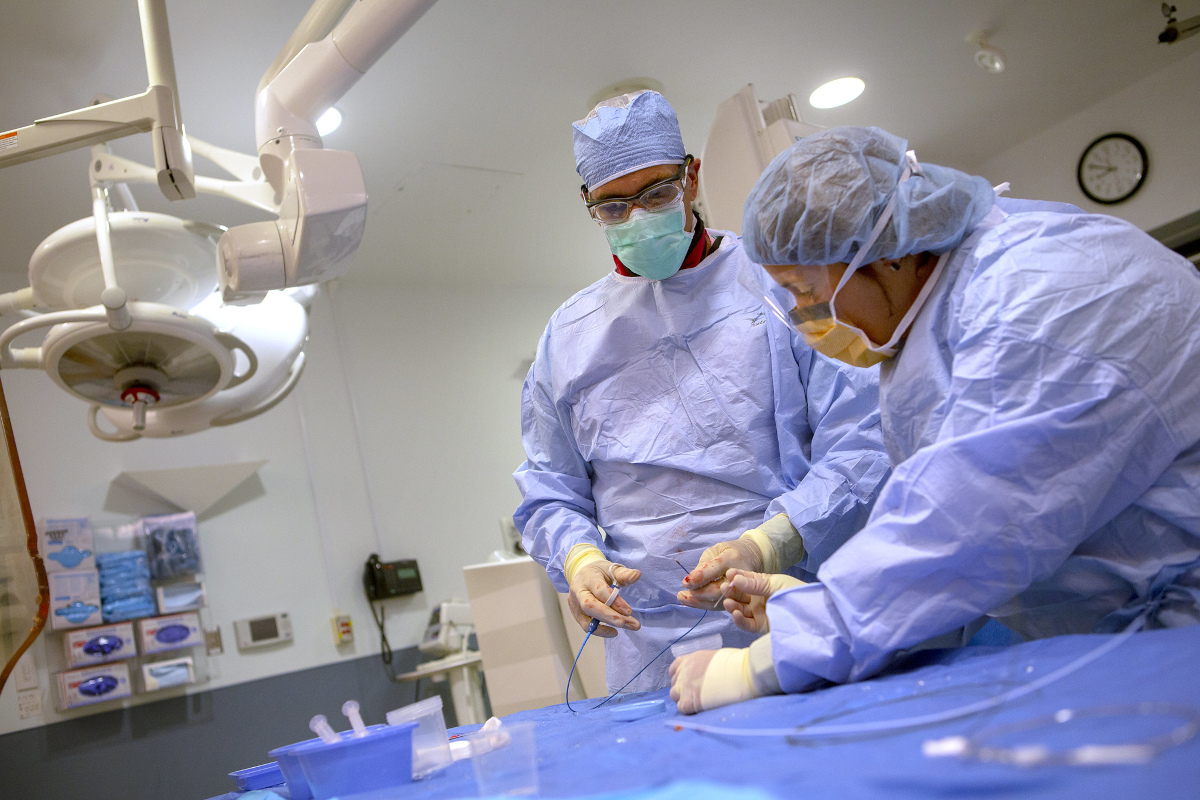Hershey Medical Center among top programs in country for heart transplant, LVAD implants

The COVID-19 pandemic changed almost everything in health care, but it hasn’t affected the safety and effectiveness of surgeries for the most serious types of heart disease at Penn State Health Milton S. Hershey Medical Center. Two reports released last month show that patient survival rates for heart transplant and left ventricular assisted device (LVAD) implant surgeries at the medical center rank among the nation’s best.
For heart transplant, the Milton S. Hershey Medical Center team recorded 100% survival for patients 30 days after surgery and a one-year post-surgery survival rate of 95.2%. Those survival rates, the most recent reported by the Scientific Registry for Transplant Recipients (SRTR), are the highest of any heart transplant program in Pennsylvania and rank among the best in the nation.
In addition, the heart transplant program ranked among the lowest in the nation for patient mortality, with a 0.63 observed-to-expected mortality ratio after 30 days and a 0.82 mortality ratio after one year, according to SRTR. That means heart transplant deaths were 37% lower than expected after 30 days and 18% lower than expected after one year.
The January SRTR report data covers heart transplant operations performed from Jan. 1, 2018, to June 30, 2020, including procedures that occurred in the early part of the COVID-19 pandemic.
“The fact that we have 100% survival at 30 days after transplant speaks to the infection prevention strategies we have in place to prevent COVID-19 and other hospital-acquired infections,” said Dr. Behzad Soleimani a heart transplant surgeon at Hershey Medical Center. These strategies include thorough pre-surgery COVID-19 testing for both heart transplant donors and recipients.
The heart transplant team achieved high survival and low mortality rates, while at the same time caring for the highest-risk transplant patients, including those who were declined for surgery by similar programs due to the severity of their heart disease.
While heart transplants replace a patient’s failing heart, implementation of an LVAD device helps keep patients’ diseased hearts pumping while they await a transplant. According to data from The Society of Thoracic Surgeons (STS) Intermacs 2020 Annual Report, Hershey Medical Center’s LVAD program earned a one-year post-LVAD survival rate of 83%, which is higher than the national rate of 75%. This was accomplished even though nearly half (49%) of the medical center’s LVAD patients are in critical cardiogenic shock—a common cause of patient mortality—compared to the national rate of 16%.
The STS-Intermacs report reviews outcomes on 25,551 patients undergoing LVAD implementation between 2010 and 2019.
“This data shows that people in our community should have no doubt they’re getting the best possible heart care by staying right here in our region,” Soleimani said.
Even though the COVID-19 pandemic postponed many elective surgeries in the early months of 2020, lifesaving procedures such as heart transplant surgeries continued. Soleimani estimates that the Hershey Medical Center team performed the same number of heart transplants in 2020 (20) that they did the year prior.
The medical center’s team approach to heart transplant surgery includes surgeons, cardiologists, intensivists, anesthesiologists, perfusionists, nurses, nurse practitioners, pharmacists, social workers, financial counselors and nutritionists. The team also includes heart transplant coordinators who guide patients through every step of their journey.
Surgeons at Hershey Medical Center have performed more than 540 heart transplant surgeries since the program’s inception in 1984. More than 200 heart transplant recipients currently receive follow-up care at the medical center.
If you're having trouble accessing this content, or would like it in another format, please email Penn State Health Marketing & Communications.
